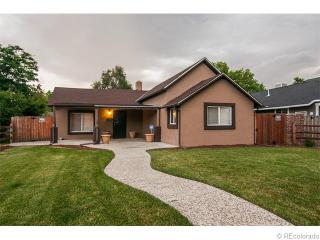The East Colfax neighborhood has roots dating back to the late 1850s, when a branch of Smoky Hill Trail brought gold seekers arriving by horse and wagon on what today is East Colfax Avenue. Over time, farms and houses appeared along the trail, which soon became known as the Kansas City Road, because it connected the early village of Denver to the nearest big city to the east.
In 1888 the town of Montclair was incorporated. The home of the town’s founder, Mathias Chochrane of Montclair, New Jersey, still stands at 1304 Olive Street. Montclair’s guiding vision, as promoted in an early speech by Baron von Richtofen, was for a community in which “only tasteful houses of $1,000 will be allowed… Colfax Avenue will be graded and improved like Broadway… shade trees will be planted throughout… an artesian well will provide watertight towers will be erected … the town will be the pride of all Denver.”
By 1900 there were 88 homes in Montclair. The town also boasted a zoo, college, golf course, art gallery, and private and public schools. St. Luke’s Episcopal Church was built in 1890 and the Stanley School in 1891. What is now Lowry Field was owned by the Episcopal Church and included the Jarvis Hall Military School. Students at the military school marched along a road that ran northwesterly from the school to St. Luke’s Church on 13th Avenue. The road can still be seen today on the short section of Richtofen Place between Quince and Roslyn streets.
After 14 years as a suburb, Montclair was annexed to Denver on December 1, 1902. This annexation included the area east of Monaco Parkway and north of 6th Avenue Parkway, eastward to Yosemite Street and northward to 26th Avenue. Denver’s neighborhoods of Montclair, East Colfax, and Lowry Field became part of Denver through this annexation 90-plus years ago.
In 1922 the “Greeters of America,” a national organization of hotel employees, established a home in the neighborhood for its members who were indigent because of sickness or other misfortune. Located on five acres, the home was surrounded by orchards and gardens, and enlivened by chickens tended to by the patients. The Greeters of America Home was dissolved in the 1950s and converted into two private residences.
Development came slowly, especially in areas immediately north and south of East Colfax Avenue. In the 1930s, it was possible to look to the east and see Fitzsimons Hospital in Aurora. Neighborhood boys hunted pheasant and rabbits in the open fields.
As the decades passed, technology and world events brought growth and change to the area. To the north, Stapleton Field was opened in 1929 to accommodate air travel to and from Denver. Until the 1940’s, Ulster Street led directly to the terminal.
In 1937 Lowry Air Force Base was established to the south. Although there was nearly constant sound of aircraft landing and taking off on two sides, residential development continued in the neighborhood, primarily to house workers from these two adjacent facilities. Construction of single family homes flourished after World War II and continued into the 1950s. Paved streets and houses soon infilled around the older houses and rural farm buildings.
To house Titan missile project construction workers in the early 1960s, apartment complexes were built on Yosemite Street south of East Colfax Avenue. Apartment construction continued at other locations into the 1970s, partly to meet demand created by military and airline personnel.
Over the years, businesses have prospered along East Colfax Avenue. As Denver’s primary link to the east until Interstate 70 was completed in 1965, the avenue was lined with restaurants, motels, gift shops, service stations, and garages to serve tourists coming to the Rocky Mountain region.
Dating back to the early 1930s, East Colfax Avenue between Ulster and Uinta functioned as a sort of “town center.” For several decades that strip boasted a drug store, beauty shop, barber, hardware store, dry goods store, and several grocery markets. In 1956 the Davis Dry Goods Store closed after 20 years in business and the building was torn down to make way for a new Italian restaurant known as Paisan’s.
The East Colfax/East Montclair neighborhood story is one of growth, change, and development reaching back to the first gold seekers and continuing with today’s residents and business owners.



